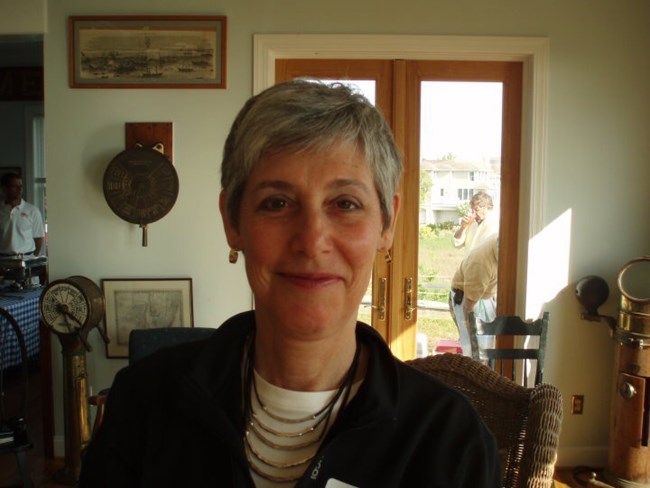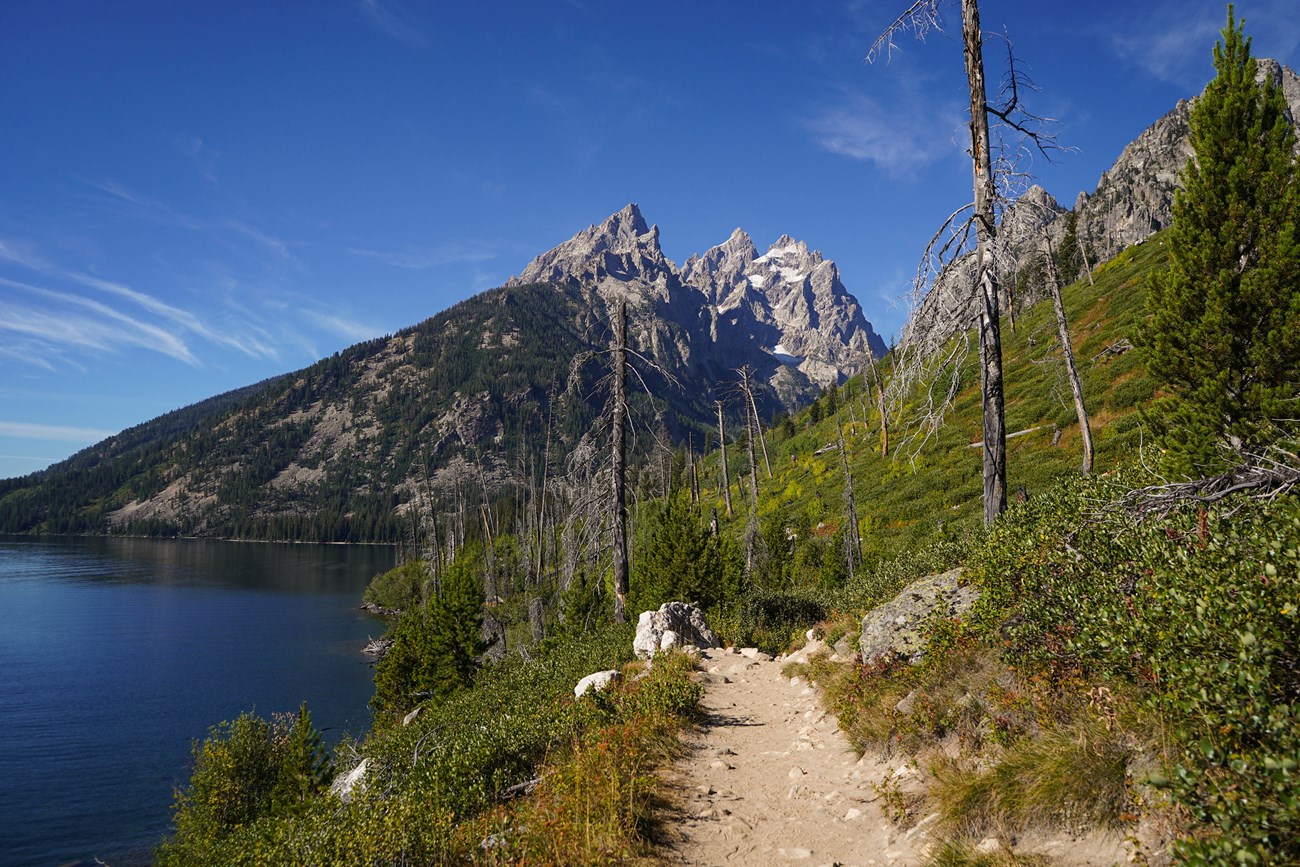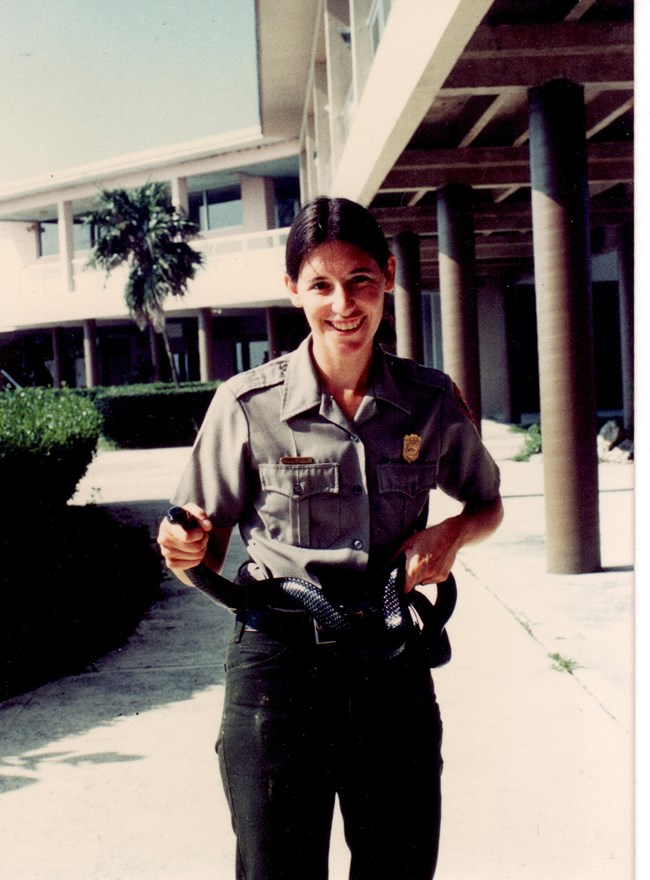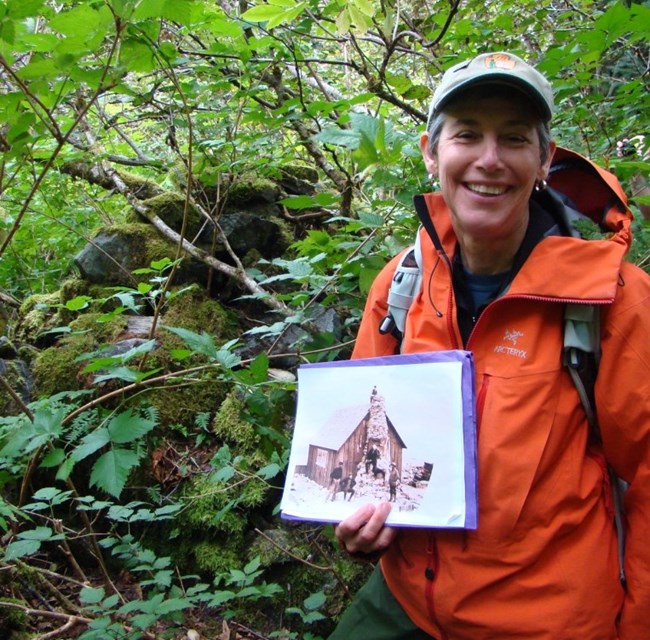Last updated: September 19, 2023
Article
Cherry Payne: A Career of Commitment and Compromise

Courtesy of Cherry Payne
Oral history has a long history in the National Park Service. In 2020, Nancy Russell, NPS Harpers Ferry Center History Collection archivist, had an idea: locate and re-interview some of the women that Dorothy Boyle Huyck interviewed in the 1970s. The Huyck collection of some 200 interviews became a key source for National Parks and the Woman’s Voice: A History, written by Polly Welts Kaufman after Huyck’s untimely death in 1979. Cherry Payne, then a young interpretive ranger at Grand Teton National Park, was among the NPS women that Huyck interviewed.
In the spring of 2020, Russell and NPS historian Lu Ann Jones located Payne. They picked up where Huyck left off. As it turns out, Cherry Payne had created a remarkable career with the National Park Service.
Commitment and Compromise
When Cherry Payne was first interviewed, there were fewer women in the agency’s workforce than there are today. Dorothy Hyuck asked, “If you were to encounter, say on one of your interpretive walks, any young woman who is in college and contemplating a Parks Service career, would you encourage her to think of the Park Service as a career possibility?”
“I encourage anyone I meet to think of it,” Payne responded. “Of course, a lot of people say, ‘Oh, it must be so neat to be a park ranger’ and indeed it seems like a real romantic profession. In a lot of respects it is, but this is just like any other job too. You have good days and bad days, but I certainly would if a woman thought that that's what she wanted, if she were committed to the Park Service idea, to the idea of conservation, fine.”
Payne’s NPS career has been a demonstration of that commitment. She has also shown how compromise is a part of commitment, as one balances the attention to work, life, and the goals of others.

NPS/J. Bonney

Courtesy of Cherry Payne
About the time that Payne spoke with Hyuck, she met Bob Howard, a climbing ranger at Grand Teton National Park's popular Jenny Lake. When the couple married they became what is known as a dual career couple. They faced what could be a daunting challenge, seeking to locate to parks and positions that allowed each of them to pursue their individual career paths. That challenge got more complicated when they became parents in the 1980s.
From Grand Teton National Park, Payne and Howard transferred to positions that took them to parks and offices in Colorado, Florida, California, and New Mexico. Then, they both headed to San Antonio, Texas, where Payne worked at San Antonio Missions National Historical Park and Howard at Lyndon B. Johnson National Historical Park. The next move led them back to Florida, where Payne was Chief of Interpretation at Everglades National Park and Bob was the Management Assistant for Dry Tortugas National Park.
Some of the challenges and benefits of being a dual career family in the National Park Service are unique to the agency, and others may sound familiar to just about anyone balancing profession, family, and personal interests. Along with the variety of work experiences that shaped her career decisions, Payne described navigating the choices and concerns around childcare, housing, commuting, and scheduling.
-
Cherry Payne: Dual Career Lifestyle
In an oral history interview, Cherry Payne reflects on her career as she considers if there are any recommendations she would make to support dual career situations.
- Credit / Author:
- NPS Park History Program
- Date created:
- 05/28/2021
-
Cherry Payne: New Challenges
Cherry Payne reflects on her early career development and the choices that were influenced by care for both family and work.
- Credit / Author:
- NPS Park History Program
- Date created:
- 06/03/2021
-
Cherry Payne: Acting on the Opportunity
In an oral history interview, Cherry Payne describes the period in her life when she was able to make an opportunity to become a park superintendent become reality. Note: This segment has been lightly edited for length.
- Credit / Author:
- NPS Park History Program
- Date created:
- 06/03/2021
Managing for Balance at Glacier Bay National Park
Negotiating a balance of interests was a critical part of Payne’s responsibilities as superintendent at Glacier Bay National Park & Preserve in Alaska, a position she held between 2007 and 2010. During her tenure, the park, partners, and surrounding communities were facing concerns about cruise ship management and tourism and the relationship between the park and the Huna Tlingit.
The park was established as a national monument in 1925, and there was no formal NPS presence until about the 1950s. Meanwhile, the local Alaska Native residents, the Huna Tlingit clans, lived in the village of Hoonah across Icy Strait, about 35-40 miles from where the park headquarters now stands, as they continued their traditional activities such as seal hunting and gull egg collection.

Courtesy of Cherry Payne
Throughout her career, Payne has advocated for bringing together teams of people with different perspectives and styles of thinking. On seeking diversity across the roles in an organization and in a decision-making process, Payne reflected, "sometimes it leads to conflict, but a lot of times it leads to better outcomes." In other words, commitment and compromise go well together.

